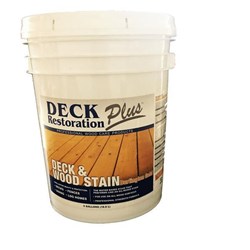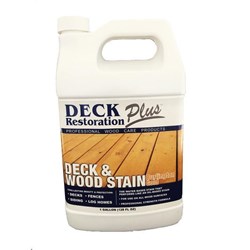
Stripping Old Sealers / Resealing
Unfortunately, the lack of a good sealing solution for so many years means that there are a lot of pavements that have performed poorly after being sealed. Many of these pavements will require that the old sealer be removed (stripped) in order to restore their appearance and prepare the substrate to receive Seal ‘n Lock.
Safety should be the primary concern when it comes to choosing and employing a method for stripping coatings. Technicians must consider all aspects involved in the stripping process before attempting to execute any stripping. Good planning and execution are critical for success. Safety considerations include the protection of employees, inhabitants, owners, invitees, pets, landscape plant materials, adjoining structures, watersheds and ground water. Be sure to plan for safety and environmental protection with diligence. It is critical to capture and properly discharge any wash water contaminated with stripping chemicals. Be sure to follow all regulations regarding the handling, transport, permitting, licensing and use of chemicals.
There is no standard solution or method that works best for stripping coatings in all cases. The application technician should be well educated and experienced in a variety of methods in order to choose the right solution for each unique situation. The condition and composition of coatings found in the field will vary widely. Performing some testing on the coating in question can help to determine which method and/or chemicals will work best in each situation. Be sure to follow all chemical and equipment manufacturer’s instructions and directions. Be sure to read and have on hand the Material Safety Data Sheet (MSDS) for every chemical.
When stripping, nearly all projects may require more than one application and/or type of method to be employed. This is because the initial coating was not applied to a consistent thickness, it has not worn consistently, and the stripper will not be applied consistently and often will encounter variations in temperature on the same job. The first attempt will remove some of the coating and additional attempts will remove more. Be sure to bid defensively with regard to stripping jobs, labor hours will vary. Test for the effectiveness of your stripping agents in a small inconspicuous area to help estimate the cost of stripping before bidding the service. Let the stripper dwell appropriately, so that the stripper lifts the sealer avoiding long exposure to pressure from the surface cleaner of wand. Let the stripper do most of the work.
While there are many strippers out there in the market place where as they can be dangerous to use and carcinogenic. We do recommend our Bio-Strip soy-based stripper that is user friendly, biodegradable and not carcinogenic. Can be applied and power washed the same day and for heavy or multiple coatings to be stripped you may cover with plastic and pressure wash the next morning.
To Strip or Not To Strip?
When approaching a restoration project that has an existing coating, you must decide to strip the old coating off, or apply Seal ‘n Lock on top of the old coating. In most cases, the old coating will need to be removed. Often, the old coating will be peeling, yellowing, white-blushed, worn unevenly or obscuring the true color of the pavers. In these cases, it will need to be removed before applying Seal ‘n Lock. Occasionally, the old coating will be in excellent condition and a coating of Seal ‘n Lock may be applied on top of it after it is thoroughly cleaned, and new joint sand has been installed to the top of the joints.
Have to Strip This One:
If you use surface cleaner, there is a chance that you will wear the existing sealer unevenly. We need a new cleaning protocol that won’t disturb it. It may be necessary to dial the pressure on the surface cleaner down, or, use soap and a scrub brush then rinse with the wand.
Common Stripping Methods Include:
1) Very hot water
2) Caustic chemical stripping
3) Solvent chemical stripping
4) Organic chemical stripping
Very Hot Water
Generally defined as water above 220 degrees Fahrenheit, hot water pressure washing with surface cleaners and wands with turbo tips can be effective on some coatings. This can be the least costly and least hazardous method for stripping coatings. However, it tends to also be the least aggressive and has limited effectiveness in removing coatings.
Caustic Chemical Stripping
There are a wide variety of commercial grade caustic paint strippers available on the market. These products have a wide range of effectiveness on a variety of coatings. It is important to find a local supplier of commercial grade strippers to inquire which products are best suited to your particular need. In general, strippers include the following caustic bases: potassium chloride, sodium chloride, and potassium hydroxide. These are very toxic and hazardous chemicals; however, they can be very effective at removing coatings. It is important that the application technician be properly trained and protected.
The surface temperature of the coating being removed is critical to the effectiveness of strippers. Warmer temperatures are required. Dwell time can be important to the effectiveness of these chemicals. Longer dwell times allow the stripper time to do its job. Many of these chemicals are made in a gel form to allow for a longer dwell time without drying out. These chemicals are best removed with hot water and all wash water must be contained, captured and disposed of properly.
Caustic chemicals can be expensive. It is critical to listen to the advice of an experienced chemical supplier to match the right chemical to your application. Testing a variety of chemicals on the coating to be removed for effectiveness can help match the right chemical to the specific coating in question.
Solvent Chemical Stripping
One of the most common and least effective forms of stripping coatings is solvent chemical stripping. Chemicals such as Xylene, toluene, mineral spirits and acetone may have some effectiveness in re-emulsifying some coatings. Typically, the effectiveness of these chemicals for removing coatings from pavement surfaces is quite limited. The fumes of these chemicals are highly flammable and toxic.
Organic Chemical Stripping
The two primary organic chemicals used for stripping coatings are soy gel and citrus-based strippers.
Soy gel appears at this time to be the most effective organic chemical stripper available. These chemicals are designed to be less toxic and harmful than caustics and solvents. Proper precautions are still very important. Soy gel has been found to be effective in removing a variety of coatings. The surface temperature of the coating being removed is critical to the effectiveness of strippers. Warmer temperatures are required. Dwell time can be important to the effectiveness of these chemicals. Longer dwell times allow the stripper time to do its job.
Citrus-based strippers are generally not effective at removing coatings over large areas; however, they can be quite effective at removing tar, glue and other sticky compounds.
Out of all of these options ... We recommend Bio-Strip
Communication
It is important to understand and shape the customer’s expectations regarding the need for stripping, the process and the expected results. Inform the customer that stripping is a multi-day process. The customer should be aware that there may be a “burn” of the grass surrounding the pavement that will recover in time. Customers should be informed about the dwell time required for strippers to effectively emulsify coatings. It is common for customers to be unhappy with their “sealer job” when it is just the stripper that has been applied and is in the process of dissolving the old sealer.
Technicians must communicate well and secure the site, so nobody enters the work area including pets. Strippers are caustic and can cause extreme injury to anyone who wanders into the work area. Customers need to be notified of this risk and recommended treatment methods from the manufacturer. They should be provided with a written “after the sale” piece that explains this as well as an MSDS sheet from the manufacturer.
Stripping Procedure
Have a plan for what stripping method you will employ.
Analysis: If you can, find out what coating product was used previously. How many times has it been sealed? When was the last time it was sealed? How much build up is on there? Test various stripping chemicals and methods to determine the method(s) that are most effective.
Plan to apply chemical strippers so that they will have the longest dwell time during the highest temperatures for the surface.
Safety:
• Take all necessary safety precautions
• Follow all chemical manufacturer’s recommendations and instructions.
• Have a copy of stripper manufacturer’s SDS sheet with crew and one at the office
• Wear all personal protective equipment including: safety glasses, gloves, boots, protective clothing, and respirators
• Have on hand any dilution wash agents or supplies to strip per manufacturers recommended on-site treatment. For example: white vinegar
• Secure entire work area
• Communicate clearly to all in area that caustics are being used and they should stay away
• Use the surface cleaner, not the wand when using caustics.
• Splashing, spraying of the stripper off the surface with a wand can be quite dangerous
Property Protection:
• Pre-wet surrounding landscape beds to help reduce uptake of any chemicals by plants
• Use silt fence to protect surrounding landscape
• Water reclamation is a must when rinsing off stripper; consider where the water drains to
• Set up water reclamation equipment
Applying the Stripper:
• Remove all objects from the pavement surface
• Pre-clean the surface with a broom and leaf blower
• Stir stripper well with large paint stick
• Surface must be dry for stripper to work
• Apply the stripping agents according to manufacturer’s directions, often with a paint roller
• If stripping a driveway, work up the driveway in sections to prevent wetting the surface
• Allow the stripping agents a proper dwell time according to manufacturer’s directions
• Surface wash with hot water while properly capturing wash water
• Be sure that removed coatings do not gum up the surface washer
• Allow pavement to dry
• Inspect surface for effectiveness and create a plan for the next phase of stripping
Removing coatings may take at least two or more applications of stripper (in areas). Very few projects are completely stripped everywhere with one application of the stripping agent.
Common Stripping Mistakes:
• Use of ineffective chemicals that do not provide adequate stripping capability
• Misuse of chemicals, not following directions
• Not enough dwell time
• Too aggressive with the pressure cleaning, using full pressure and a narrow tip.
• Stripping when the temperature is too cold
• Gumming up surface cleaning equipment with the removed coating
• Inadequate safety precautions taken
• Inadequate provision for wash water capture and disposal















